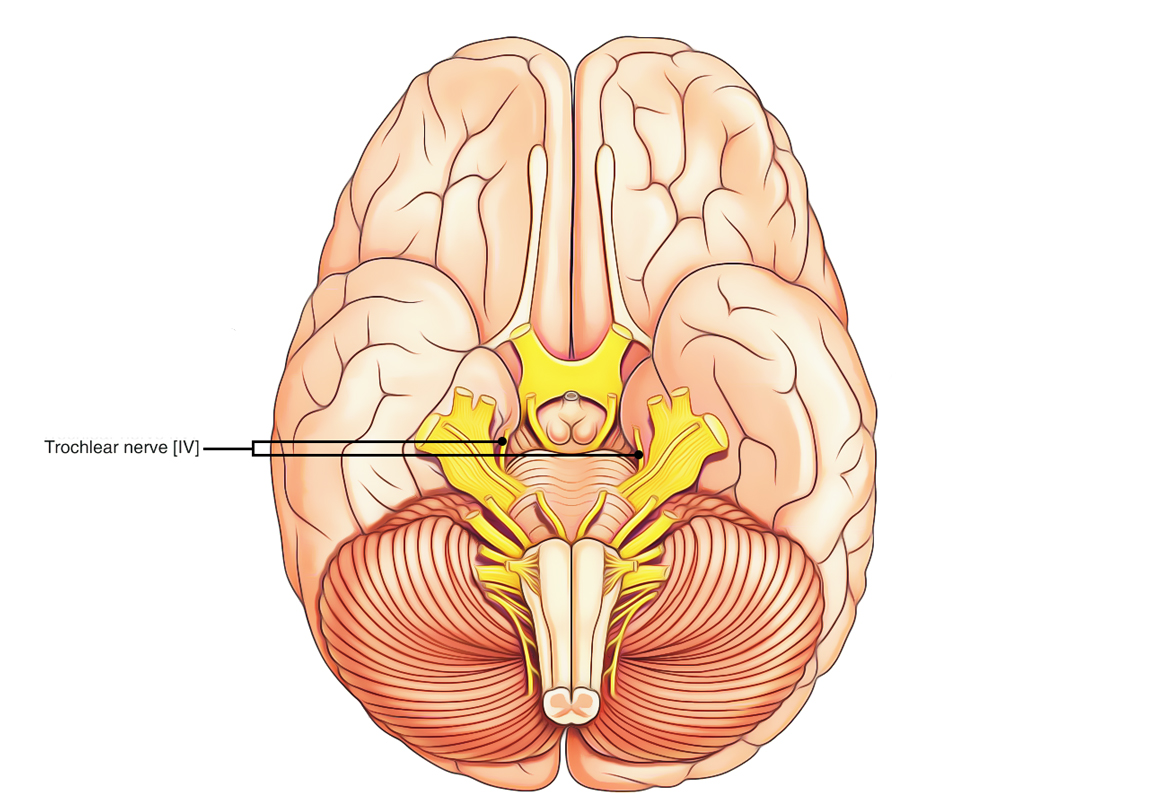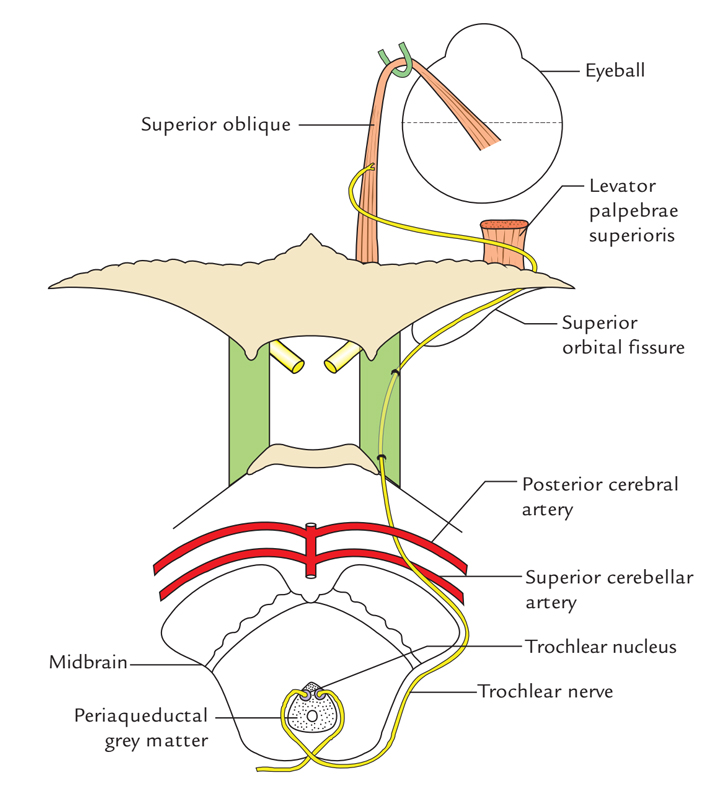Trochlear nerve is the 4th cranial nerve. It is a motor nerve and supplies only 1 muscle the superior oblique muscle of the eyeball.

Trochlear Nerve
Unique Features
- It’s the only cranial nerve which comes on the dorsal aspect of the brain.
- It’s the most slender of all the cranial nerves.
- It’s the smallest cranial nerve.
- It’s the only cranial nerve whose nuclear fibres decussate before appearing on the surface of the brain.
- Its nucleus gets only ipsilateral corticonuclear fibres.
- Phylogenetically, it’s the nerve of 3rd eye.
Functional Parts and Nuclei
General somatic efferent fibres: They originate from the trochlear nucleus in the midbrain and supply the superior oblique muscle of the eyeball.
Course, Connections and Distribution

Trochlear Nerve: Course
The trochlear nerves originate 1 on either side of frenulum veli, from the dorsal aspect of the midbrain. The nerve winds round the superior cerebellar peduncle and cerebral peduncle just above the pons, after appearing from the brain. It then enters between the posterior cerebral and superior cerebellar arteries to appear ventrally. It is located medial to and below the complimentary margin to tentorium cerebelli. In the anterior part of the sinus, it crosses over the oculomotor nerve and become lateral.
In the cavernous sinus, it runs forwards in its lateral wall between the oculomotor and ophthalmic nerves. The nerve enters the cavernous sinus by piercing the posterior corner of its roof.
The nerve enters the orbit via the superior orbital fissure superolateral to the tendinous ring. It runs medially above the levator palpebrae superioris to go into the orbital surface of the superior oblique which it supplies.
Clinical Significance
Lesions of Trochlear Nerve
The injury of trochlear nerve will cause paralysis of the superior oblique muscle of the eyeball. This can medically present as:
- Extorsion of the eyeball and weakness of downward gaze. As a result, the patient faces issue while going downstairs or reading paper and
- Diplopia (double vision), which takes place when the patient appears laterally and in glimpses on looking downward. There’s compensatory headleaning to the opposite side.

 (64 votes, average: 4.72 out of 5)
(64 votes, average: 4.72 out of 5)